Introduction
Yet again this is superficially a simple assignment – take eight photographs on a common theme. My chosen theme is the Sugimoto’s idea of “Time’s Arrow” which I plan to explore and develop through photographing a tidal cycle and the ebb and flow of waves on the seashore.
Before I continue there is an issue here for me that make this more challenging and which needs to be explored a little further.
The assignment brief specifies “different ways”. The images I have chosen will struggle to fall into this category. They are taken in a relatively short time frame and have the same formal composition, although in my choice of images I have tried to select a variety of moods – or perhaps more accurately tempi (tempos?).
There is some risk associated with proceeding in this way for assessment purposes, but I hope I will be able to explain my decision as I proceed.
A corollary of this is that I feel a need, justified or otherwise, to demonstrate that I can shoot the subject in a variety of ways so I will be posting a selection on my blog as I proceed with the course. The first post and some of my broader contextual research is available here.
Background
A number of threads have come together to set up the idea for the series I am presenting.
- The first emerges from a series of Sugimoto Seascapes in Barth’s Vanishing Landscapes [1], which appealed to me for their calm and meditative nature. Further research on the internet [2], [3] and a contribution to “Setting Sun: Writings by Japanese Photographers”[4], reveals that Sugimoto has a rather philosophical approach to photography. He feels his seascapes manifest the idea that early man was looking at exactly the same view – that they are a link through time – the date of his picture is “Times Arrow” as he puts it.
- This ties in with the part of a conversation with my tutor which included the idea of introducing an element of time into my planned revisions to the collage for Assignment 2.
- The next thread is the thoughts set in train by Ansel Adams’ Surf Sequence [5] which is apparently considered quite influential in the development of photo-sequences.
- A third thread emerges from the Futureland Now seminar I attended (and the subsequent study day) - a key feature of which was Landscape as a practise beyond the simply figurative. Can landscape photography do more than simply tell a story of a landscape? The message of the seminar was clearly that it could and this is an area I am interested in exploring further.
- The final thread emerges from my initial investigations into Japanese photography, and the idea discussed briefly on my blog that a photographic landscape – “fukei” in Japanese – is “a paradox: a fixed view of something that is understood by definition to be in flux.”[4]
Images
In spite of the limitations of daylight in Cumbria at this time of year I have attempted to sample the waves at regular intervals from low to high tide so that variations in the beach topography have also been captured.
I will make some brief notes on the individual images in the table below, but they are all taken in a very similar way. The camera was handheld about 2” above the sand or rocks and images collected usually in groups of 2-5 using continuous shooting mode. As far as possible they were composed using live view to help keep the horizon reasonably level and central to aid final cropping, and they were generally taken with the aperture at f/11 and the focus manually set at around 2’ – close to the hyperfocal distance – to maximise depth of field.
ISO was kept as low as possible consistent with a shutter speed which yielded reasonably sharp images until light began to fall to the point where the ISO needed to freeze motion interfered with image quality to an unacceptable degree.
The image format is a consistent 2:1 panoramic ratio (which seems to fall into the range of values suggested for human eyesight published around the internet) and the horizon is always placed centrally. This latter decision is quite a static approach – and traditionally advised against for this reason, although as well as Sugimoto, Elina Brotherus [6] has made significant use of this placement of the horizon. A summary of my relatively brief investigations into “horizons” will appear on my blog in the near future.
Overall I too around 600 pictures during the day – which provided a significant editing task. My intent has been to produce a meditative, calming effect which reflects the experience of simply standing by the shore and watching the waves come and go. As Sugimoto notes people have done this for millennia. On the large scale he has adopted the view has been unchanged for millennia and is independent of location, and yet… closer inspection shows that it is different every second of every day and from every inch of shoreline – it is truly “transient, ephemeral and never stopping” [4].
Display
This has exercised my mind quite a bit as I do not believe that a standard gallery type layout is necessarily ideal for what I have set out to accomplish. A number of possibilities offer themselves:
- The images could be hung on a gallery wall in a wave pattern to mimic the idea of the tide rising and falling, or on free standing panels at varying distances from the gallery doors so that you would have to take a metaphoric walk “across the beach” to see the low tide images;
- The images could be printed in stacks with varying numbers of images one above the other on single print – the height of the print would then reflect the movement of the waves in and out;
- The images could be projected on a continuous loop with each blended into the next –one of the music students featured on the main OCA website has produced a piece that would be an ideal background for this.
Lessons learned
- Concept: I was very clear in my mind what I wanted to achieve before I started shooting which, as my previous assignments have established, is the ideal. I feel as though it has built on some of the ideas and research which emerged from Assignment 2 and the benefit of that gradually increased understanding of what truly interests me and what I want to say has started to have an impact on my approach.
- Planning: Daylight hours are short and the weather has been less than helpful so the key lesson has been “Don’t miss an opportunity”. On a purely practical basis I already knew the approximate direction of the lighting, but I found a set of tide tables invaluable – an understanding of local conditions is an essential for landscape photography.
- Research: The prime learning points here are; never underestimate the value of research and never underestimate the amount of time it takes to find absorb and digest research material. I feel that the effort I put into this area paid dividends not just in shaping my ideas, but also in contextualising them.
- Technical and Visual Skills: I think this is the first time I have consciously moved away from autofocus – obviously I have used manual/pre-focussing techniques previously, but this is the first time I have undertaken a full project in that way, and is perhaps a sign of growing confidence with my equipment. It is also a clear sign that I am adapting technique to the needs of the project. ‘Visual skills’ is a tricky one – as the images are essentially the same. But that is the point of the project and I believe the choices of have made in composition and cropping have been made with the overall aim in mind and fully support that aim.
- Quality of Outcome: Producing technical high quality images has been a challenge. In order to freeze the movement of the waves - or at least to prevent blurring them to the familiar mist – has required increasingly high ISO as the light has faded. This has been further complicated by the need for relatively quick reactions in composing, shooting and then removing the camera from the flow of water. While a waterproof case would have helped with the latter it would have made consistent composition very difficult.
- As far as possible I have adapted my technique to adjust to this while remaining true to my original aims and I believe that the outcome is of adequate technical quality for a variety of display options.
- Creativity: I still struggle to understand what this means. My ideas build on those of others – most notably Sugimoto – but they have become mine in the building. If the ideas expounded in a short video on creativity [7] posted by a fellow student are to be believed creativity results at least in part from being playful with ideas, and I believe this is what I have done, pulling influences from a range of sources and mixing them together to come up with something of my own.
- Context: I have clearly identified my influences and indicated how I see these shots as building on their work.
Links and references
- Vanishing Landscapes: Ed. Nadine Barth: Pub. Fances Lincoln; 2008; pp23 et seq
- http://www.art21.org/artists/hiroshi-sugimoto?expand=1
- Contacts Vol 2: Hiroshi Sugimoto
- Setting Sun: Writing by Japanese Photographers; Ed. I. Vartanian; Pub. Aperture 2006: p41 e seq
- Ansel Adams; Surf Sequence, San Mateo County Coast
- Brotherus, Elina – The New Painting
- http://www.eileen-rafferty.com/2013/01/john-cleese-on-creativity.html
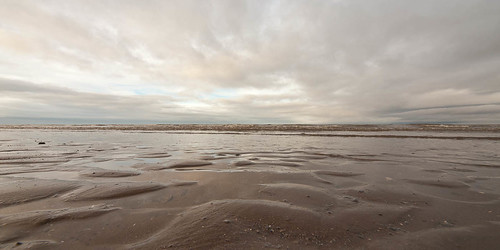
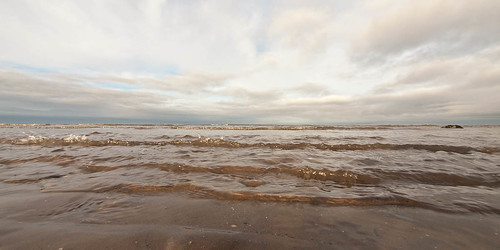

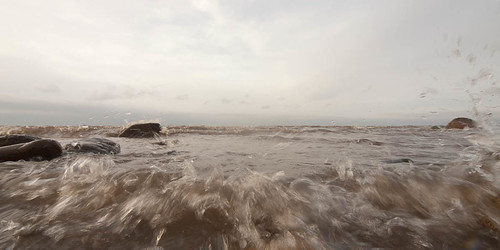

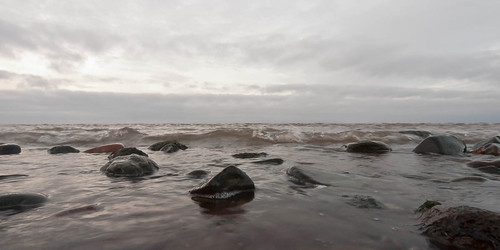
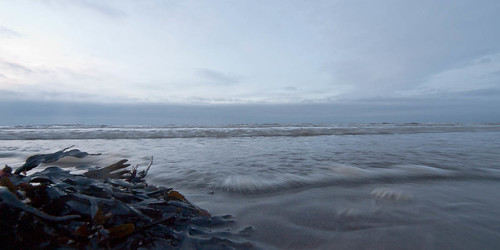
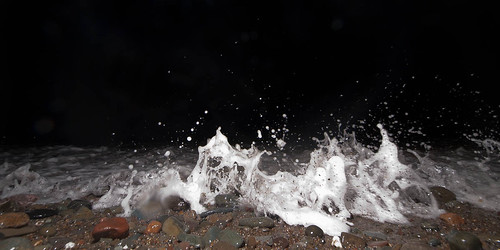
No comments:
Post a Comment